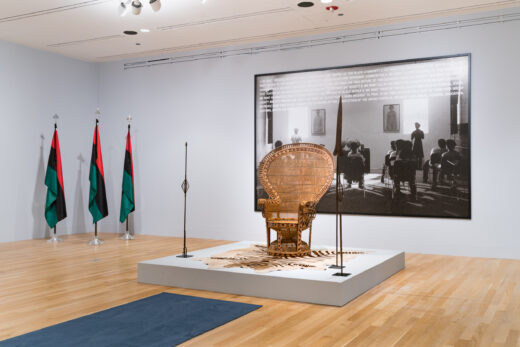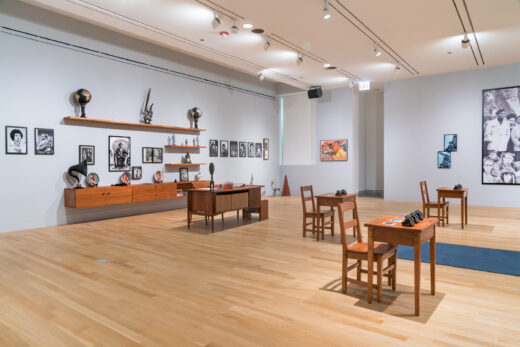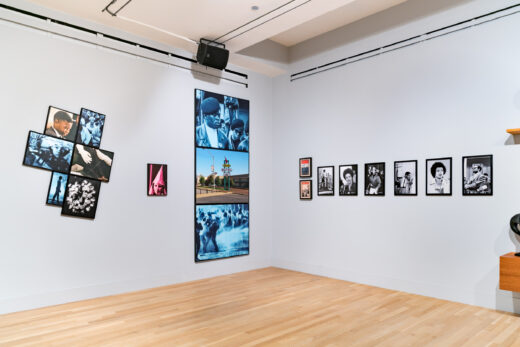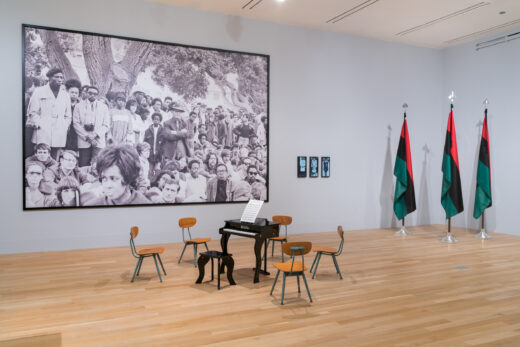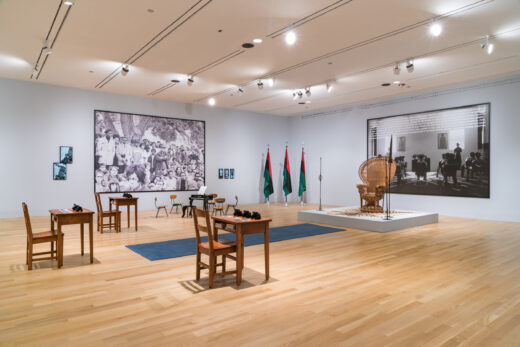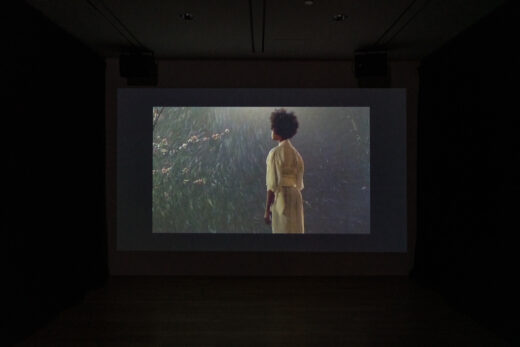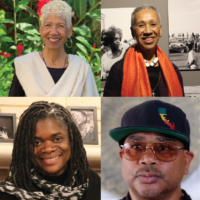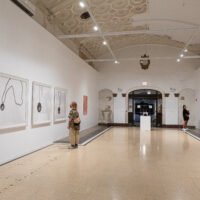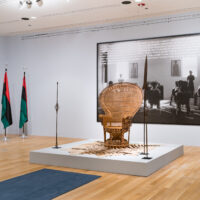Carrie Mae Weems

Carrie Mae Weems’ installation Heave explores violence, both systemic and local, against the bodies of women and of people of color. These themes have figured large in the contemporary artist’s body of work. Throughout her 30-year career, Weems has created art that investigates the American family, cultural and gender identity, class and race oppression, and the ramifications of stratified political power in our society. Having an early background in dance performance, Weems later became renowned for her work in photography especially. She also employs a variety of media in her art, including text, textiles, sound, and video, which she often arranges in site-specific installations.
The impetus for this installation, Heave, was the 2016 election of Donald Trump to the presidency of the United States and the blatant unleashing of white supremacist rhetoric and actions that came with it. She narrates: “We know that a predator has entered the White House. And that coming on this wave, this wave of destruction, this wave of destruction, was a counterforce, a wave of men and women and children rising against the coming of his day.” Nonetheless, she locates the movement’s harrowing beginnings in the American 1960s. Through film, music, video games, photographs, magazines, books, and other ephemera—some preserved from the artist’s own childhood—arranged in a mid-century modern den, we are invited to explore the rise of white supremacy in the second half of the 20th century.
The installation focuses on personal choice. We decide how and how long we wish to engage with the work and with the histories of violence and oppression that it foregrounds. But while Weems reckons with the contemporary effects in America of decades of death, murder, and assassinations of black men and black communities, as well as the rape, harassment, and illegal solicitation of women and children, she at once explores moments of resistance, such as the Women’s March on Washington. Also filled with images of protest, the installation thus does not insist on despair and inevitability but rather proposes that ordinary people, both as individuals and as groups, may move America forward towards universal justice and equity. Weems suggests that we may work together to combat what she has described as “the changing same” in which oppressed people remain oppressed, the perpetual victims of domestic violence and domestic terror, gang violence and state violence, that has been enacted on women and people of color.
